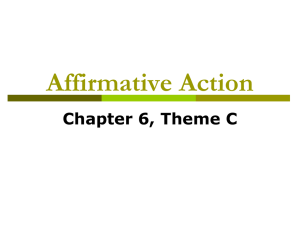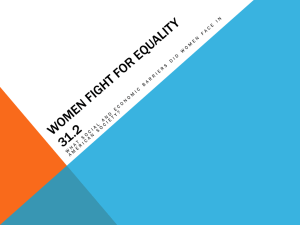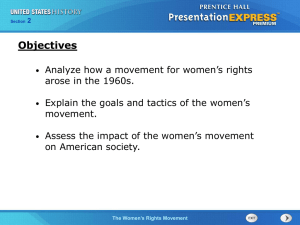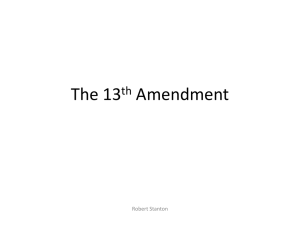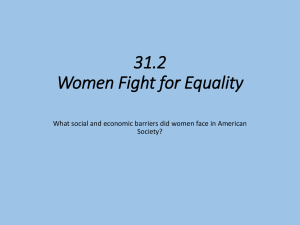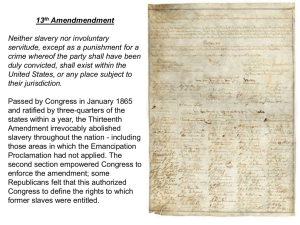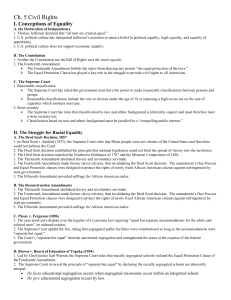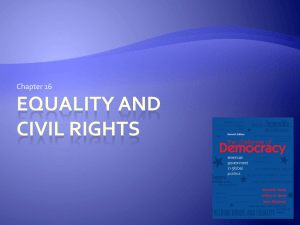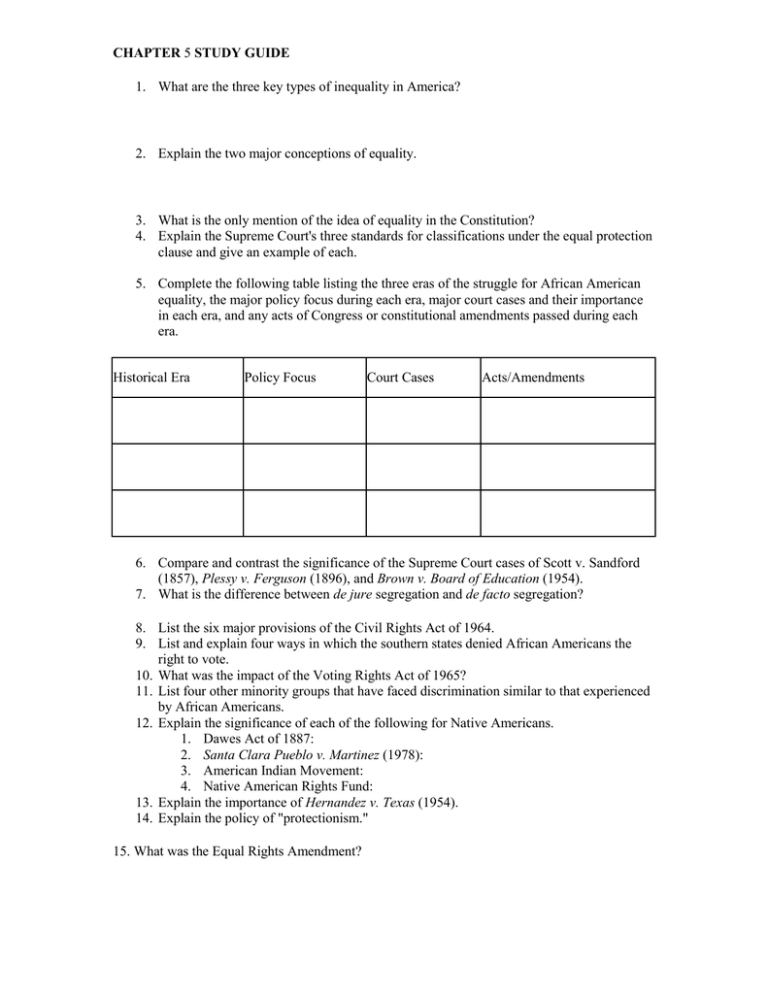
CHAPTER 5 STUDY GUIDE
1. What are the three key types of inequality in America?
2. Explain the two major conceptions of equality.
3. What is the only mention of the idea of equality in the Constitution?
4. Explain the Supreme Court's three standards for classifications under the equal protection
clause and give an example of each.
5. Complete the following table listing the three eras of the struggle for African American
equality, the major policy focus during each era, major court cases and their importance
in each era, and any acts of Congress or constitutional amendments passed during each
era.
Historical Era
Policy Focus
Court Cases
Acts/Amendments
6. Compare and contrast the significance of the Supreme Court cases of Scott v. Sandford
(1857), Plessy v. Ferguson (1896), and Brown v. Board of Education (1954).
7. What is the difference between de jure segregation and de facto segregation?
8. List the six major provisions of the Civil Rights Act of 1964.
9. List and explain four ways in which the southern states denied African Americans the
right to vote.
10. What was the impact of the Voting Rights Act of 1965?
11. List four other minority groups that have faced discrimination similar to that experienced
by African Americans.
12. Explain the significance of each of the following for Native Americans.
1. Dawes Act of 1887:
2. Santa Clara Pueblo v. Martinez (1978):
3. American Indian Movement:
4. Native American Rights Fund:
13. Explain the importance of Hernandez v. Texas (1954).
14. Explain the policy of "protectionism."
15. What was the Equal Rights Amendment?
16. List and explain the significance of four Supreme Court cases dealing with sex-based
discrimination.
17. How has Congress attempted to end gender discrimination in the area of employment?
18. What is meant by "comparable worth"?
19. In what two ways are women legally treated differently in the military?
20. How has the Supreme Court dealt with the issue of sexual harassment?
21. In what ways are the elderly discriminated against in American society?
22. What are the main provisions of the Rehabilitation Act of 1973 and Americans with
Disabilities Act of 1990?
23. Why might gays and lesbians face the toughest battle for equality?
24. Define the term "affirmative action."
25. List four cases in which the Supreme Court seems to support affirmative action and four
cases in which it seems to oppose affirmative action.
26. How does equality threaten liberty?
27. How do civil rights laws increase the scope and power of government?
KEY TERMS AND CASES
Identify and describe the following key terms:
civil rights
Fourteenth Amendment
equal protection of the laws
Thirteenth Amendment
Civil Rights Act of 1964
suffrage
Fifteenth Amendment
poll taxes
White primary
Twenty-fourth Amendment
Voting Rights Act of 1965
Nineteenth Amendment
Equal Rights Amendment
Americans with Disabilities Act of 1990
affirmative action
Identify and describe the following key cases: Scott v. Sandford (1857)
Plessy v. Ferguson (1896)
Brown v. Board of Education (1954) Hernandez v. Texas (1954) Korematsu v. United States
(1944) Reed v. Reed (1971)
Craig v. Boren (1976)
Regents of the University of California v. Bakke (1978) Adarand Constructors v. Pala (1995)




